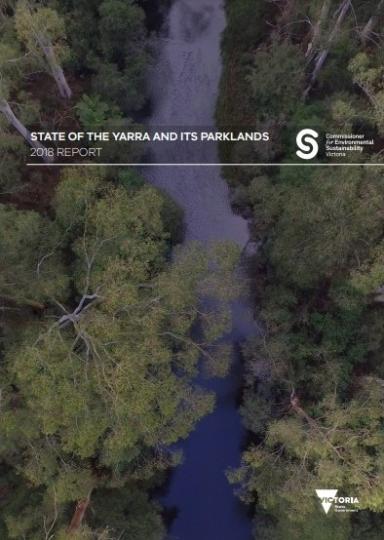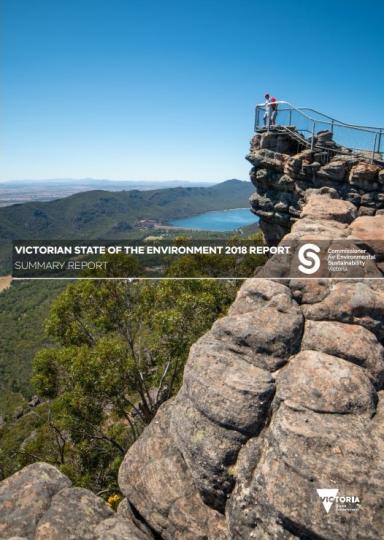The State of the Yarra and its Parklands 2018 Report is the first of its kind from the Commissioner for Environmental Sustainability.
The State of the Environment 2018 Report provides the overarching approach to environmental reporting in Victoria. This State of the Yarra and Its Parklands 2018 Report should be read as a companion to the State of the Environment 2018 Report and, like that report, has the legislative authority to make recommendations to government and requires government to respond to those recommendations.
The seven recommendations presented in this report should not be considered in isolation but rather as Yarra specific challenges that complement the 20 recommendations presented in the State of the Environment 2018 Report.
The State of the Yarra and its Parklands 2018 Report was tabled in Parliament by the Minister for Energy, Environment and Climate Change on 19 March 2019.
The Report provides an assessment of the environmental condition of the Yarra River corridor through analysis of a set of 36 biophysical and socioeconomic indicators.
Summary
The report aims to understand the environmental condition of the Yarra River and its parklands as an integrated whole living entity. It evaluates the current state of biophysical indicators across each Yarra River reach and provides an overall summary for that indicator.
Each biophysical indicator will be evaluated by applying the State of the Environment Indicator Assessment. This assessment approach is applied consistently across ‘State of’ reporting by the Commissioner for Environmental Sustainability, Victoria.
Communities of the Yarra and its Parklands
The Yarra River and its parklands hold diverse environmental and social values for the different communities who live alongside or nearby.
A healthy Country is fundamental to the cultural, spiritual, physical and economic wellbeing of Traditional Owners and Aboriginal Victorians. It provides ecosystem services such as clean air, drinking water and improved soil health for food production and the health benefits derived from contact with nature. Biodiversity in parks and reserves provides green and blue spaces for recreation and an escape from the fast pace of Melbourne’s central business district.
Although it is important to view the Yarra River as one living entity, the reality is that the Yarra River and its parklands will hold different social and environmental meanings and interests for the communities at different reaches of the Yarra. This includes environmental, cultural, social and economic aspirations for the Yarra River and its parklands.
The community aspiration outlined in Communities of the Yarra and its Parklands needs to be underpinned by strong evidence-based science, with cultural, social and economic indicators directly linked to biophysical indicators. This is because healthy land, water and biodiversity within and along the Yarra River and its parklands determine the health and wellbeing of all Victorians who interact with this living system.

Threats and Pressures
The Yarra River corridor is exposed to many threats and pressures including inappropriate land development along the river bank, invasive pest plants and animals, litter, pollution (including sewerage), stormwater, climate change and population growth.
Environmental Economic Accounts
The estimated annual benefit of the Yarra River corridor from waterway health, recreation and amenity values, cultural and heritage values, and landscape features and values is $730 million. An assessment of environmental- economic accounts for the Central Highlands provides some insights into the economic value of ecosystems for the following sectors: agriculture, forestry, tourism and recreation and water. The evaluation also includes a value for carbon sequestration. The assessment applied the United Nations System of Environmental Economic Accounting approach. In terms of this report’s geographic scope, the values reported here were extracted and restricted to the Yarra River upper reach. This highlights an opportunity for a full environmental-economic accounts assessment, including cultural ecosystem services, for the whole of the Yarra River and its parklands.



